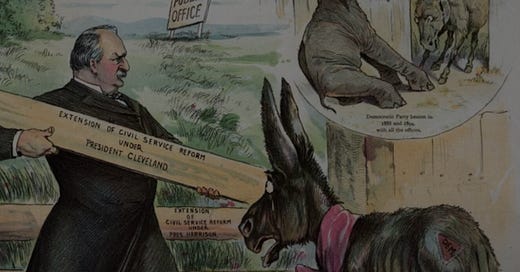After years of government failures, an angry Congress confronted the federal bureaucracy. The much-criticized bureaucracy used archaic technology and was badly behind on its business. Many employees didn’t even bother to show up to work in person. Congress and the nation were ready for a thorough overhaul of the executive branch. The year was 1887.
Just as the late Gilded Age bureaucracy was failing to adapt to the industrial age, today’s bureaucracy is proving itself inadequate for the digital age. There is once again a push for fundamental reform, embodied today in Elon Musk’s Department of Government Efficiency (DOGE). Lawmakers who support DOGE should draw lessons from the 1880s, when congressional investigations helped drive reform by uncovering bureaucratic failure.In the 1800s, accusations of government inefficiency and corruption were as common as today. So were congressional investigations of these allegations. Congress, in addition to routine oversight, had conducted at least 63 one-off investigations of particular issues. But all of these investigations relied upon information that bureaucrats voluntarily submitted, so nobody knew what the bureaucracy was hiding.
Although complaints from constituents indicated that delays and mistakes were more serious than agencies admitted, nobody knew the depth or causes of the bureaucracy’s problems. Businessmen felt that agencies were hidebound and that civil servants were lazy, whereas officials felt that the government was inadequately staffed. In 1887, Senator Francis Cockrell hit upon a novel solution: He formed what came to be called the “Cockrell Committee,” whose members set out to see the bureaucracy’s problems with their own eyes.
Read more of my piece The DOGE of the 1880s over at The American Conservative. Over the next few weeks, I’ll go into greater detail about this significant and largely forgotten reform initiative. Until then, enjoy the article!




